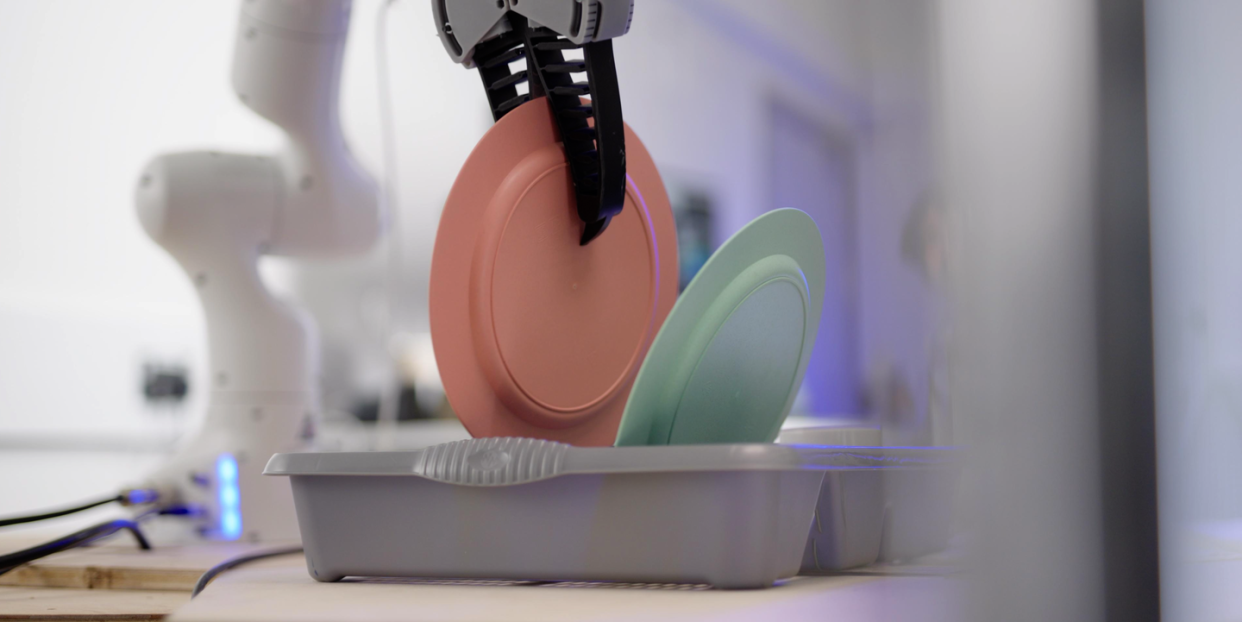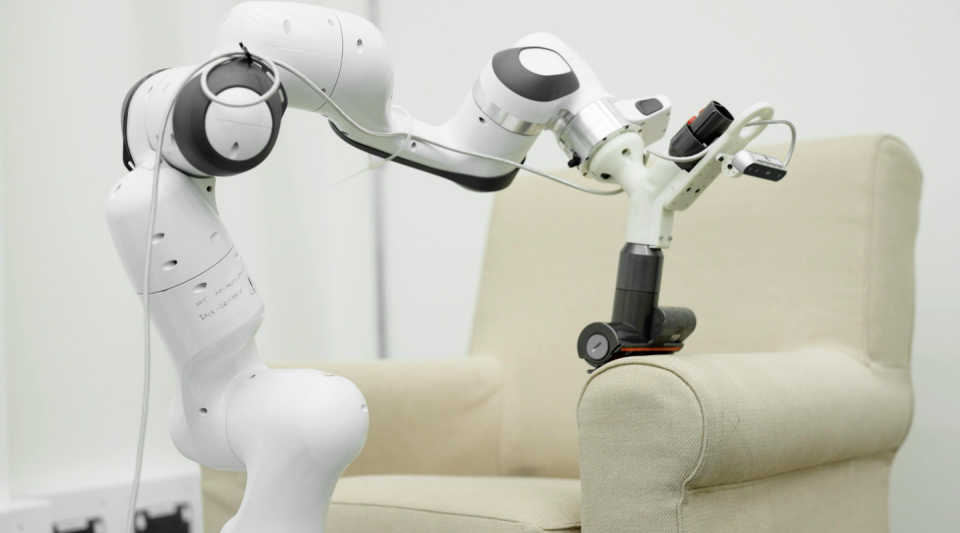Dyson Is Building Robots to Perform Your Most Dreaded Household Chores

"Hearst Magazines and Yahoo may earn commission or revenue on some items through the links below."
Last week, Dyson announced that for more than ten years, the company known for vacuums has been working on robots that can help us complete household chores.
In a new hiring push, Dyson is expanding its robotic engineering efforts across four new facilities in Europe and Asia.
A more rugged robot is required to handle the wear-and-tear of working inside a chaotic human household.
Imagine a robot picking up toys strewn about your home. Or maybe a robot bleaching the kitchen counter after it meticulously washes your dishes and places them in your drying rack. That’s the vision of the future that Dyson hopes to make a reality with an engineering push that welcomes robots into our homes to complete arduous, repetitive household tasks. That could make your least favorite chores a thing of the past.
On May 25, Dyson revealed that the brand, best known for its line of vacuums, has spent the last ten years heavily dedicated to improving robotics within the home; it’s all part of a covert 20-year push toward advanced household robotics that began with the firm’s development of robo-vacuums. “There is a big future in robotics, saving people time, performing chores for people and improving people’s daily lives,” Dyson says in a YouTube video about the new robots (embedded at the top of this story).
Dyson released the promotional video as part of a hiring push, as it aims to eventually have 700 engineers across four sites in the United Kingdom and Singapore dedicated to household robotics.
To make it work, Dyson knows it needs to continue to improve the functionality and durability of the machinery to “be as compliant as possible and safe in a home environment.” Translation: make a robot that doesn’t get destroyed by the humans it hopes to help.
In order for Dyson to get a robot involved in cleaning the sofa, picking up toys, putting away dishes, or cleaning countertops, the company needs to improve its durability. With movable arms and grippers—meaning various degrees of freedom, or directions the robot can move in—the machine can’t be under a constant threat of breaking. It also needs to be able to move about a home without breaking other things. (Unless, you know, Dyson figures out how to get the robots to fix things, too).
Dyson is already at work upgrading sensors and cameras to help the robot scan rooms, furniture, and household items to better understand and distinguish between objects. Add in upgraded thermal imaging—we don’t want the robots trying to clean humans, after all—and the robots are well on their way to becoming adequate cleaning pros.

Of course, Dyson isn’t the only group trying to make a complex household-friendly robot. Unlimited Robotics believes its robot, “Gary,” can handle a few basic household chores once it dials in the software. Aeolus Robots, meanwhile, has built machines that can help out with opening doors and picking up items. Boston Dynamics, for its part, already has a popular robotic dog, called Spot, that can not only load the dishwasher, but has taken up work with a bomb squad, at oil and gas sites, and even in medical settings throughout the pandemic. (You can even buy one of your own, but it’s pricey).
Dyson is working with England’s Imperial College London on secretive additional research and development, and reportedly plans to spend nearly $3.5 billion on technologies and facilities over the next five years, at least a large portion of that filling out the robotics effort.
Dyson says it want the world’s brightest robotics engineers to join the company to “create the UK’s largest, most advanced robotics center at Hullavington Airfield and to bring the technology into our homes by the end of the decade.”
You Might Also Like

